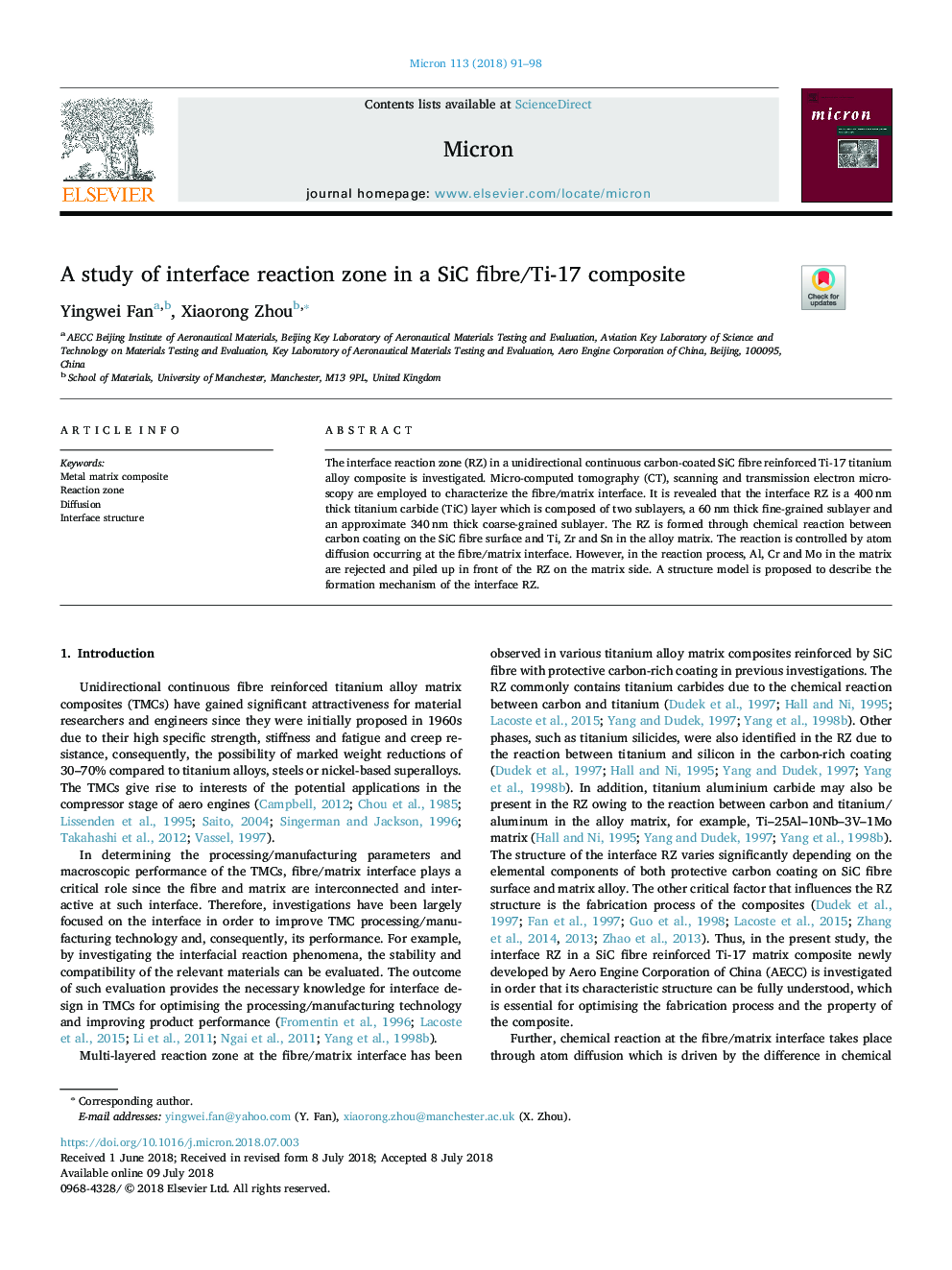| Article ID | Journal | Published Year | Pages | File Type |
|---|---|---|---|---|
| 7985952 | Micron | 2018 | 8 Pages |
Abstract
The interface reaction zone (RZ) in a unidirectional continuous carbon-coated SiC fibre reinforced Ti-17 titanium alloy composite is investigated. Micro-computed tomography (CT), scanning and transmission electron microscopy are employed to characterize the fibre/matrix interface. It is revealed that the interface RZ is a 400â¯nm thick titanium carbide (TiC) layer which is composed of two sublayers, a 60â¯nm thick fine-grained sublayer and an approximate 340â¯nm thick coarse-grained sublayer. The RZ is formed through chemical reaction between carbon coating on the SiC fibre surface and Ti, Zr and Sn in the alloy matrix. The reaction is controlled by atom diffusion occurring at the fibre/matrix interface. However, in the reaction process, Al, Cr and Mo in the matrix are rejected and piled up in front of the RZ on the matrix side. A structure model is proposed to describe the formation mechanism of the interface RZ.
Related Topics
Physical Sciences and Engineering
Materials Science
Materials Science (General)
Authors
Yingwei Fan, Xiaorong Zhou,
